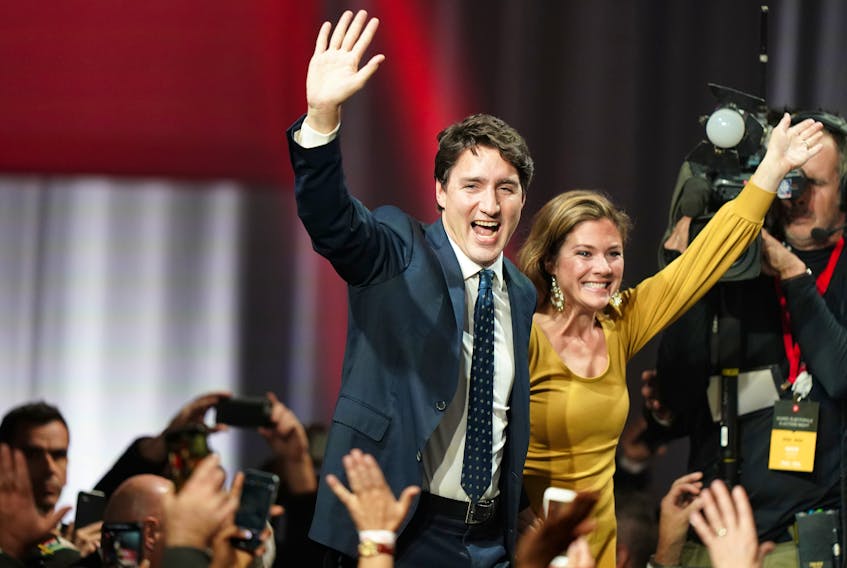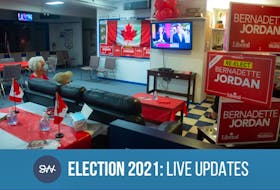Fourteen Liberals, nine Conservatives, five New Democrats, and four Greens — that’s what Atlantic Canada’s political landscape would have looked like Tuesday under a proportional representation system.
Instead, Monday’s federal election saw the region end up with 26 Liberals, four Conservatives, one New Democrat, and one Green.
Across Canada, proportional representation would have resulted in 116 Liberals, 117 Conservatives, 57 NDP, 22 Greens, and 26 Bloc Québécois, rather than 156, 122, 24, 3, and 32, respectively.
With the support of just one-third of Canadian voters, the Liberals now form a minority government.
This is the reality of a first-past-the-post system, one which many people argue Canada has outgrown.
Wilfred Day is an electoral reform analyst with Fair Vote Canada, a group that advocates for electoral reform. Under the first-past-the-post system, he says, millions of ballots are nullified.
“A party can get 39 per cent of the votes and 60 per cent of the seats and 100 per cent of the power,” he said.
That’s happened twice in recent years. The first was in 2011 under Stephen Harper.
“In response to that, a whole lot of people said ... ‘Wait a minute. How is that democratic? We should have a system where every vote counts.’”
That would end up being a cornerstone of the Liberals’ campaign four years ago — that the 2015 election would be the last under what leader Justin Trudeau described as a dated and unfair system.
This played in very well with the 2015 campaign narrative of ousting Harper and “strategic voting." Many Canadians opted to vote for the party with the best chance of defeating the Conservative in their riding.
That election night, history repeated itself when Canadians gave Trudeau’s Liberals 39 per cent of the vote — some of that support undoubtedly based on his promise of electoral reform. In turn, first-past-the-post gave the Liberals a majority government.
Just over a year later, the Grits backed away from the reform promise, citing a lack of support from Canadians. It’s a decision that continues to raise the ire of critics.
When they were still floating the idea of electoral reform, the Liberals favoured a ranked-ballot system.
The NDP and Green parties were — and continue to be — in favour of mixed-member proportional representation, as do many other proponents of electoral reform.
Many argue the benefit of first-past-the-post is fewer minority governments, which can often be slower and less effective in enacting change.
It’s also argued that in a multi-party system, fringe parties would get too many seats under proportional representation.
However, Day points out most countries with proportional representation have a threshold — somewhere between two and five per cent — that a party has to reach in order to be part of the government.
For those who like proportional representation, the proof is in the numbers. In Monday’s election, 16 per cent of Canadians voted for the NDP, yet they received only seven per cent of the House of Commons’ 338 seats.
The Green Party received 6.5 per cent of the vote. However, instead of getting 22 seats, the party ended up with only three.
This, of course, rubs Green Party deputy leader and Halifax candidate Jo-Ann Roberts the wrong way.
“I think it is time to say, ‘OK, can we adjust this so it better reflects the maturing of a country?’” Roberts says.
For many years, Roberts notes, Canada was a multi-party democracy in name only, with power lobbed between the Liberals and the Conservatives. That’s slowly changing, she points out, as other parties begin to garner more of the popular vote.
“We're not in a system that is equipped to handle it,” she says.
Time for a change?
Of course, Day notes, it’s no surprise the two major parties stand to gain most from the status quo.
But with the Liberals in a minority situation and widespread support for electoral reform from the NDP and Greens, Day wonders if the time for change has come.
Moreover, the Coalition Avenir Quebec moved to hold a referendum on proportional representation in that province’s legislature last month.
If Quebec votes in favour of electoral reform — and the Bloc supports the provincial decision — that could equate to another 32 MPs in favour of proportional representation federally. (As a side note, referendums on proportional representation have been defeated in B.C., Ontario and, most recently, P.E.I.).
But even with support from the Bloc, NDP and Greens, there would need to be a significant defection from party lines among Liberal and/or Conservative MPs, or a change in position from the Liberals.
That might not be entirely out of the question. In 2014, half of the Liberal caucus voted in favour of an NDP motion on proportional representation.
Wayne Long is Liberal MP-elect for the New Brunswick riding of Saint John-Rothesay. He regrets not being more outspoken when his party backed off its promise of electoral reform. He has no doubt there are other Liberals who would like to revisit the conversation.
Long believes electoral reform is the key to increasing voter turnout — especially among young, progressive voters — as well as fighting the rise of populism and extremism.
“I can’t tell you the amount of youth I’ve talked to who say, ‘We're not going to vote because it doesn’t count, because it swings back between the Liberals and the Conservatives.’ And that concerns me greatly,” Long said.
As for whether or not a mixed-member proportional representation system would benefit Atlantic Canada specifically, experts say it depends.
Cape Breton University political science professor Tom Urbaniak says for Atlantic Canada to be well-served by a change in the electoral system, it would need to retain the current 32 geographical seats. Many mixed-member models half the number of geographical seats by doubling the size of the ridings, and make up the other seats with proportionally allocated MPs.
“Local representation and access to our local MP are very important to many Atlantic Canadians because of our distinctive and disparate communities,” he says.
Urbaniak adds that proportionally allocated seats from party lists would have to be structured in such a way as to ensure a number of those seats is set aside specifically for Atlantic Canada.
“This would ensure that our part of the country doesn’t lose its already precarious clout in Parliament,” he said.
St. Thomas University sociology professor Matthew Hayes said one benefit of electoral reform for Atlantic Canadians is party policy that is more reflective of the entire county.
“The Conservative party in its current form — in part because of our electoral system — is not electable. Their vision of the country only appeals to people in Alberta and Saskatchewan and has very little appeal in Eastern Canada, apart from rural areas,” he says.
“(Under proportional representation), they'd have to work with other parties in minority parliaments and that would require probably compromising on things like climate change and pipelines.”
For St. Francis Xavier University political science professor Jim Bickerton, the benefits of proportional representation for the East Coast are obvious.
“There are many Atlantic Canadians who are deprived of their preferred political representation by our system,” he says. “Even when the Liberals swept the region in 2015, that still left 40 per cent of Atlantic Canadians who voted for candidates from other parties that were left out in the cold,” he said.
“People in this region are more diverse than can be represented by one party, and on those grounds alone, I believe there are many Atlantic Canadians that aren’t well-served by the current system.”


